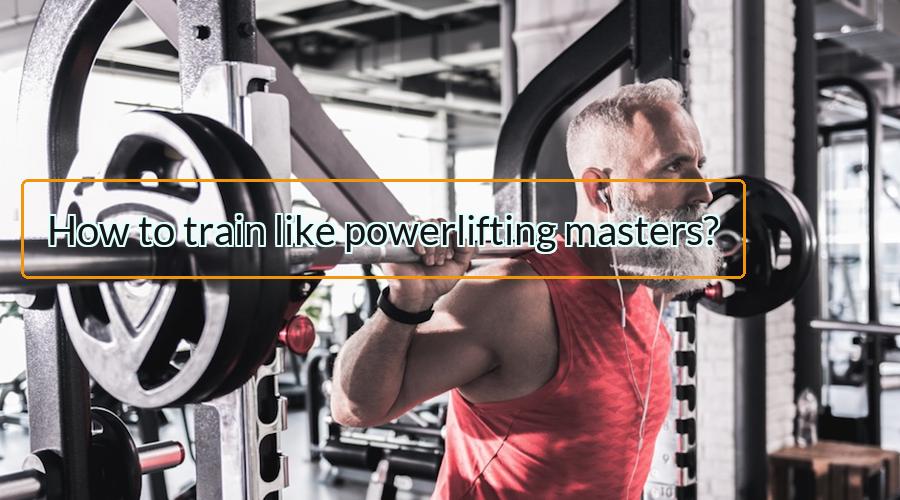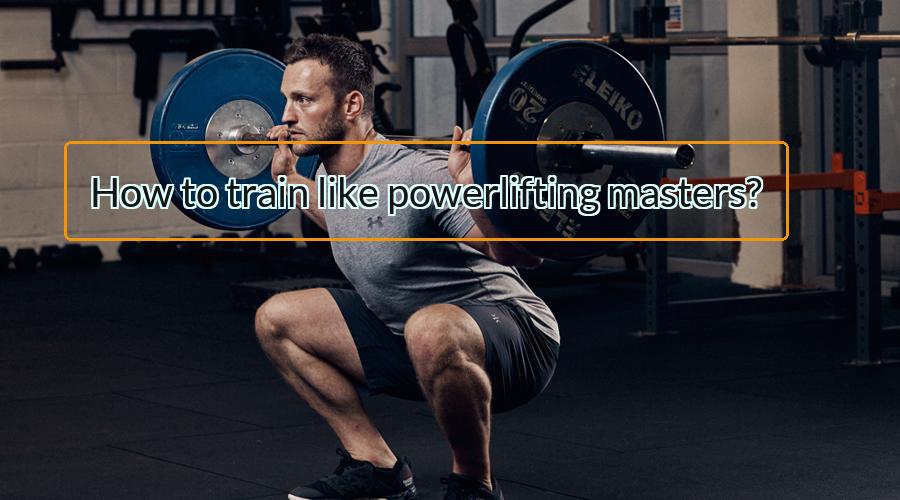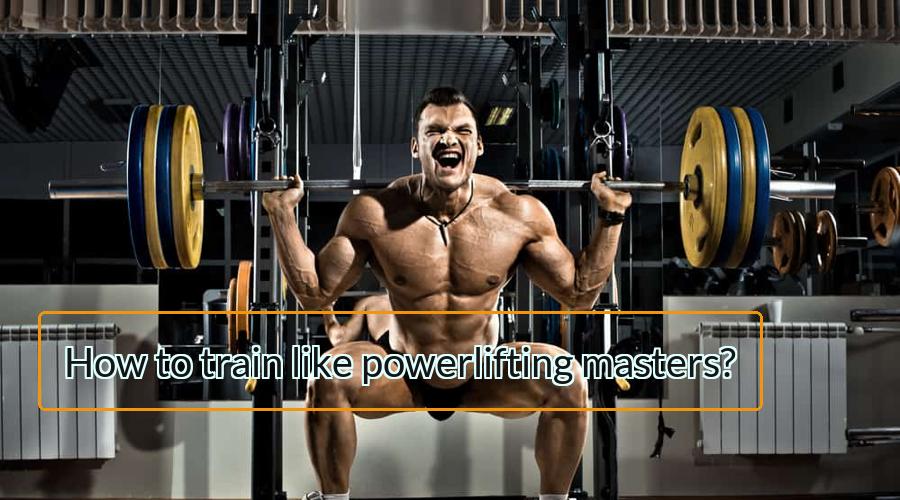
Powerlifting is an incredibly popular sport that tests the physical strength and endurance of athletes. It requires a high level of dedication, focus, and strategy to reach peak performance. Mastering the powerlifting training process can be difficult but rewarding for those who take the time to understand it. This article will provide an in-depth look at the various components needed to create a successful masters powerlifting training program, including the proper weight lifting techniques and nutritional guidelines.
What are the best masters of powerlifting training?
Masters powerlifting training is a specialized form of strength training designed specifically for those individuals who are over the age of 40. It involves higher intensity and more frequent workouts than traditional weight lifting exercises, in order to maximize strength gains at an older age. The best masters powerlifting training consists of exercises that target all major muscle groups with an emphasis on proper technique and form.
The core exercises used in masters powerlifting training are squats, bench press, bent-over rows and deadlifts. These fundamental movements help to build muscle mass as well as overall body strength and stability. To further increase intensity, variations like decline benches or Olympic lifts can be added into the program. In addition to targeting specific muscles with these heavy compound movements, accessory exercises like lat pulls, lunges or calf raises can also be utilized for better results.
General masters powerlifting training
Masters powerlifting is an intense and highly competitive sport, with athletes of all ages competing to lift the heaviest weights. It requires a specialized training program that caters to both the physical and mental demands of competing in powerlifting competitions. For general masters athletes, there are a few key elements to focus on when it comes to training for success.
The first element of any successful masters powerlifting program is strength building. This involves heavy weight lifting exercises such as deadlifts, squats, and presses designed to increase muscle mass and overall strength. Training should also focus on gaining flexibility through dynamic stretching and mobility work. This will help protect against injury while also improving form during lifts. Additionally, proper nutrition is essential for providing energy during workouts and recovery afterwards.
Read more about boxing shoulder workout

The best powerlifting training program from masters
Masters powerlifting training is a great way to stay fit and healthy. It’s important for older athletes to choose the best program to maximize their performance while minimizing the risk of injury. This article will provide an overview of the best powerlifting training program available for masters athletes.
The first step in any successful master’s powerlifting program is to consider your current level of strength and fitness. Start by assessing your goals and determining what type of exercises, sets, and reps you need to reach those goals. Once you have established your goals, create a weekly workout plan that includes progressive overload as well as accessory work such as core exercises, mobility drills, stretching, and other light activities that help prevent injuries.
Next, make sure your diet supports your training needs with adequate amounts of protein during each meal or snack throughout the day.
How to start a master’s powerlifting training program?
Powerlifting is becoming an increasingly popular form of exercise and training for people of all ages. Those who are in their ‘masters’ age bracket can benefit from a powerlifting program that is tailored to their physical abilities, as well as their goals. If you’re looking to start your own master’s powerlifting training program, there are a few steps you should take to ensure success.
First, it’s best to consult with a certified powerlifting coach or trainer to get help in developing a plan that is specific to your needs and goals. The coach can provide guidance on exercises, sets/reps, rest times between sets and how often your workouts should be performed each week.
Next, set realistic goals for yourself so that you can track progress over time and make improvements when necessary.

Tips from masters powerlifting training
Masters powerlifting training is an intense form of exercise that requires dedication and drive to become successful. It is important for athletes to remember that strength and skill will only come with time, practice, and proper technique. The following tips from masters powerlifting champions can help you build a safe and rewarding practice routine.
First, it’s essential to focus on safety and proper form when performing any lift. Start slow with lighter weights before gradually increasing the load; this allows your body to get used to the movements without risking injury or fatigue. Additionally, ensure you have a spotter who can provide assistance during heavy lifts; this prevents accidents from occurring or injuries from worsening if something goes wrong.
Second, make sure you take rest days between workout sessions in order to give your muscles time to recover and regroup for the next challenge ahead.
Read more about Turinabol vs Anavar
From PVC to masters powerlifter in 6 months
The road from PVC to masters powerlifting champion is a long and arduous one, but for one determined athlete it took just six months.
29-year-old Chris Hardy started training in the basics of powerlifting in mid-April this year, with no prior experience or knowledge of the sport. Under the watchful eye of his trainer, he quickly progressed from simple PVC exercises to mastering advanced techniques like deadlifts and squats. With proper diet and an intense dedication to his program, Chris was able to make incredible progress in record time – going from novice lifter to competitive masters powerlifter by October!
Chris’s hard work paid off as he went on to compete in two national tournaments over the next four months, earning impressive titles along the way.

Supplementary powerlifting exercises
Masters powerlifting training has become an increasingly popular activity for people over the age of 50. There are many benefits to taking on this form of physical activity, such as increased muscle strength, improved balance and coordination and enhanced mental wellbeing. However, if you want to take your masters powerlifting training to the next level, it’s important that you include supplementary exercises into your routine.
Supplementary exercises can help build strength in key areas which will benefit your overall performance in the gym. They also add variety and interest to a workout program, meaning that you don’t become bored or complacent with your routine. The best supplementary exercises for master powerlifters are those which target larger muscle groups such as squats, deadlifts, shoulder presses and bench presses as these all help develop overall body strength and stability.
Training as a master powerlifters
Masters powerlifting is an intense sport that requires dedication and hard work. This type of training demands a comprehensive approach to fitness, as it incorporates both strength and conditioning into the equation. For those looking to take their powerlifting performance to the next level, mastering the art of training is essential.

The first step in becoming a master powerlifter is understanding the basics of strength and conditioning. All lifters should have a solid foundation in proper form, exercise selection, nutrition and recovery strategies. Once these fundamentals are mastered, athletes can begin focusing on developing their own individualized program for success. Proper programming will include periodization cycles that target specific goals such as increasing muscle mass or improving speed capabilities. Additionally, incorporating Olympic lifts can be beneficial in building overall functional strength that will help boost performance on competition day.
What is the best way to powerlift?
The best way to powerlift is to focus on proper form and technique. Start with lighter weights and gradually increase the weight as you become more comfortable with the movements. Make sure to rest between sets and always warm up before lifting. Additionally, it is important to listen to your body and adjust your routine accordingly. Lastly, having a knowledgeable coach or trainer can help you reach your goals safely and efficiently.
What are the best exercises for powerlifting?
Squats, deadlifts, and bench press are the three main exercises for powerlifting. Other good exercises to include in your powerlifting routine are bent-over rows, shoulder press, pull-ups/chin-ups, and barbell curls. To maximize your powerlifting performance, focus on proper form and technique while performing these exercises.
What are the benefits of powerlifting?
Powerlifting offers many benefits to those who participate. It can help build strength, improve posture, increase bone density, and reduce stress. Additionally, powerlifting can help with weight loss and improved cardiovascular health. Finally, it can be a great way to make friends and build a sense of community.